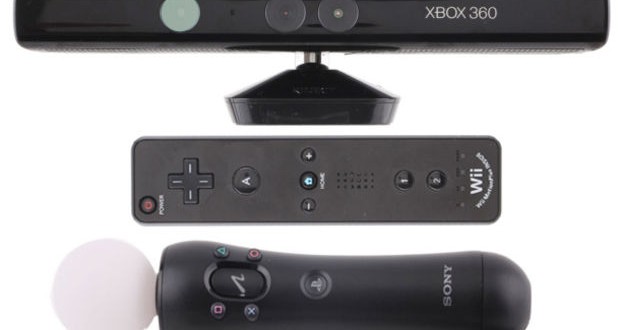Similar complaints can also be levied at Microsoft. The Kinect launched for the Xbox 360 in November 2010, and offered a controller-less alternative to Sony and Nintendo’s offerings. The device is a camera that is supposed to track a person’s full body, theoretically providing a fully immersive game. The problems with Kinect didn’t stem from a lack of support; Microsoft did provide a relatively large amount of content for the Kinect, especially when compared to Sony and the Move. Instead the Kinect simply wasn’t great at capturing motions. The device required a large area for the player to operate in and would disconnect regularly and would be to recalibrated.
When Microsoft announced the Xbox One, they declared it would ship with a new and improved Kinect as standard. This received a mixed response, with people questioning why it had to remain connected to the console at all times and whether that was an invasion of privacy. Despite the backlash Microsoft stuck to their guns and released the Xbox One including a Kinect in November 2013. A year later, and falling further behind in the console war to Sony’s PS4, Microsoft made the decision to ditch the Kinect and started shipping console only bundles. This saw a surge in sales as the price dropped. While this was likely to more people being attracted by the general lower price, a lot of gamers will have been buoyed by Microsoft dropping the useless accessory with lacklustre games. It did provide voice support but a lot of people would rather not have a camera pointing at them so they can ask their console to turn on when a controller does the same thing.
The issue seems to be that developers and publishers didn’t account for the limitations of the systems. No motion control is ever going to 100% accurate to your body movements, and as developers began to move away from party and dance games, the limitations became more glaring. While in theory it may seem like a good idea to incorporate motion control into an FPS game, the reality is far removed from that dream. The experience boils down to a clunky way of playing that is neither rewarding or innovative. Rather than tagging motion control on to games that are better suited to a real controller, developers instead should focus on how to make the most of the limitations of the devices. While that may limit them to a variety of multiplayer focussed games, they can help create a new wave of innovative, interactive game experiences, much like Wii Sports did in 2006. Anyway who likes swinging their arms about on their own, its so much more fun to have people in the room to laugh at you as you madly swing around. I hope for early console adopters and people that were duped into buying peripherals that are currently useless that the manufacturers begin putting a little more effort and time into developing a catalogue of games for their respective motion controllers. If Sony, and I assume Microsoft, eventually want us to buy into VR with the Morpheus (and whatever Microsoft may or may not cook up), they would do well to show they will support accessories and gadgets that they have already released under false pretences.
 Load the Game Video Games, Reviews, Game News, Game Reviews & Game Video Trailers
Load the Game Video Games, Reviews, Game News, Game Reviews & Game Video Trailers



